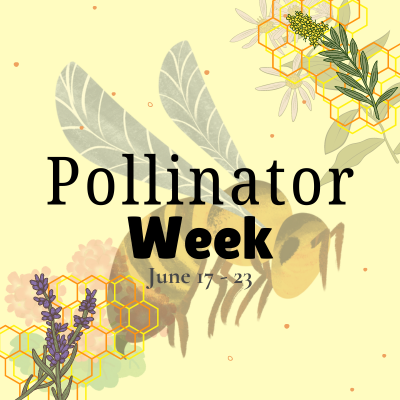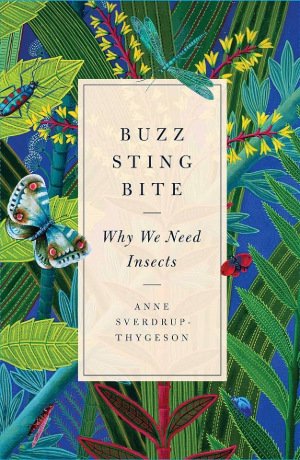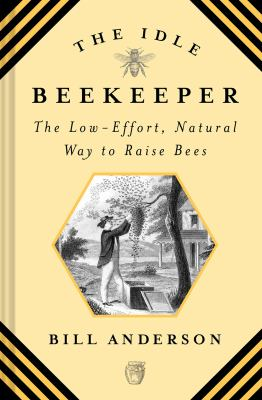
This week (June 17-23) is National Pollinator Week! To support our agriculture and local ecosystems, this week encourages us to get to know the small creatures who help our crops grow.
Yonkers exists in what is known as the Eastern Broadleaf Forest Oceanic Province, which crosses states like Ohio, Kentucky, Rhode Island, and of course New York to name a few (check out the linked document for a full map). In our region, benefitting pollinators like bees will be especially helpful to the production of soybeans, alfalfa, berries, clovers, and fruits. However, bees are not the only ones responsible for helping out. The pollinators best for our region also include butterflies, moths, beetles, birds, and flies—yes, flies!
When trying to attract pollinators, the New York State Pollinator Protection Plan recommends arranging your gardens with plants that bloom at different times. This way, your garden can be a source of pollination for a longer time range. For example, if you were to plant only lavender flowers, your garden would only attract butterflies and bees in early spring. However, if you were to stagger your garden with lavender, butterfly weed, and goldenrod, you’d have a garden that supports pollinators through spring, summer, and fall. Want to learn more? Consider taking out a book about insect pollinators such as the following:

|

|
| Buzz, Sting, Bite: Why We Need Insects by Anne Sverdrup-Thygeson (found under: 595.7 S) | Super Fly: The Unexpected Lives of the World's Most Successful Insects by Jonathan Balcombe (found under: 595.77 B) |
The ruby-throated hummingbird is an excellent seasonal pollinator in New York State. They visit for breeding in late April through early May. While it’s too late to say hello to them this year, in the future you may want to consider placing dead branches in high places, like a tree. Because hummingbirds are so small and light, these branches don’t need to be thick or heavy. Hummingbirds prefer dead branches as perches when looking out for danger and food. You can also create a more stable place for them to rest by building a birdhouse.
Birdhouses too mainstream? You might want to consider building a bee house instead! While you can't build one for commercial purposes in Yonkers, you might want to maintain one to help out these important pollinators. You can learn more about restrictions around building bee houses by contacting the Mayor's Helpline. However, if you live outside of Yonkers and have a revenue of over $1000, you may be able to gain assistance from the New York State Beekeeper Tech Team, which specializes in providing “colony inspection, parasite analysis, pesticide testing, and business development services to hobbyist, sideliner, and commercial beekeepers in New York State.” If you’re interested in applying, you can learn more on the NYS Beekeeper Tech Team website.

|

|
| Hummingbirds of North America: Attracting, Feeding, and Photographing by Dan True (Found under 598.8 T) | The Idle Beekeeper: The Low-Effort, Natural Way to Raise Bees by Bill Anderson (Found in 638.1 A) |
One interesting development in revitalizing ecosystem efforts comes from the Department of Transportation. They experimented with a new mowing method involving highways. Usually, the strips of vegetation along a highway have two different mowing periods. The area closest to the road is mowed twice a year, and the narrow strip on the farside is only mowed once a year. However, in the experiment, the far side was expanded to cover more land and only mowed once every two years, while the closer roadside vegetation continued its usual annual cut for the safety of drivers. In this five year study, they found that the quality of these habitats improved, and they had higher biodiversity for their insect populations. This valuable finding is great news for our local agriculture. If you notice more wildflowers along the highway, take a moment to appreciate their vibrant colors and the benefits they provide to our ecosystem!
This National Pollinator Week, consider getting to know your native plants.

|

|
| Botanica North America: The Illustrated Guide to Our Native Plants, Their Botany, History, and the Way They Have Shaped Our World by Marjorie Harris (found under: Q581.97 H) | Tiny + Wild: Build a Small-Scale Meadow Anywhere by Graham Laird Gardner (found under: 578.74 G) |
Zaivy Luke-Alemán is a Clerk I at the Will I. Grinton Library.